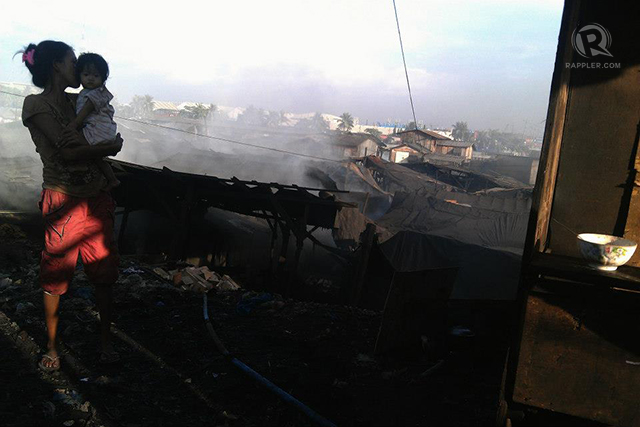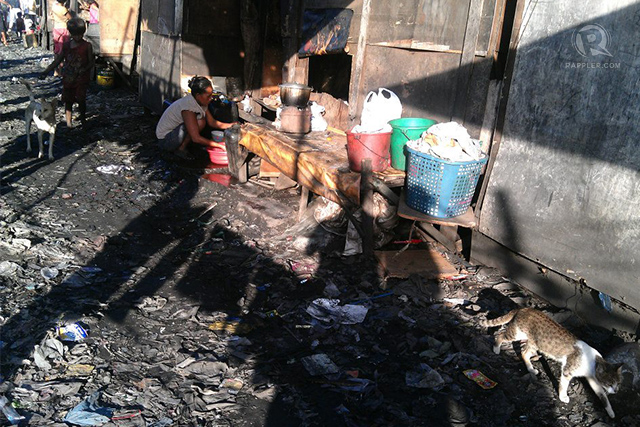SUMMARY
This is AI generated summarization, which may have errors. For context, always refer to the full article.

For the longest time the country has been waging an uphill battle against poverty. Despite the introduction of economic and political reforms, the latest official figures indicate that reducing poverty, unfortunately, remains a very tough nut to crack.
Latest official statistics from the National Statistical Coordination Board (NSCB) indicate that the incidence of poverty across the population has barely gone down from 2006 to 2012. Whereas 28.8% of the population were poor in 2006, 27.9% were poor in 2012. This represents a very modest 0.9 percentage-point reduction in poverty incidence in the span of 6 years.
The anemic rate of poverty reduction is made more disheartening by the fact that the economy has seen considerable growth and improvement since the past decade. Gross domestic product (GDP) in real terms increased by 34% from 2006 to 2012, and real GDP per person increased by 19.52% over the same period.
Macroeconomic fundamentals are robust (due to prudent fiscal and monetary policy); the Philippine Stock Exchange Index is reaching all-time highs (an indication of strong investor confidence); and the country recently obtained an investment grade rating for the first time ever (a move expected to attract foreign investments into the country).
As one can see, there is currently a glaring disconnect between growth and poverty reduction. Poverty is not being reduced at a rate commensurate to the growth of the overall economy. Therefore, inclusive growth, or growth that trickles down to all sectors of society including the poor, doesn’t seem to be happening just yet. One can imagine the disappointment (and frustration) of top government officials as they scratch their heads and look at these latest figures.
In order to fight poverty, we need not introduce every imaginable anti-poverty program, but only those that have been shown to actually work. But is there really a way to distinguish between programs that work and don’t work?

Randomized control trials
Perhaps we can take the cue from another field of study which does just that: medical research.
It is of prime importance to know which types of medical interventions (e.g., drugs, diagnostics, therapies) work and don’t work before they are introduced to the general public. And one of the gold standards in clinical trials are empirically-based experiments called randomized control trials (RCTs).
RCTs work roughly like this: Suppose you are studying the impact of a new drug on a chosen health outcome (say, heart disease). Randomly assign individuals in a population into two groups, A and B. Apply the effective drug intervention to children in group A (called the treatment group) but not to those in group B (otherwise known as the control group). Follow through the lives of the subjects for the next couple of months or years and compare their health outcomes in the end.
The use of a control group (group B) allows researchers to conclude that the difference in health outcomes in both groups must have come from the drug intervention and not from any other confounding factors. That is, by randomizing the choice of subjects among people with otherwise similar backgrounds, we’re controlling for the possibility that, say, subjects in group A might be inherently healthier than those in group B. Hence, one can conclude that it is the drug intervention that’s responsible for the better health outcomes of children from group A, and not the inherent differences in health.

It is this power of RCTs to extract causal relationships between policy interventions and outcomes that has made them a particularly attractive research methodology in finding out which programs and policies work in alleviating poverty.
Instead of evaluating medical interventions, RCTs in development studies examine the impact of programs like deworming, monetary incentives, and job insurance on development outcomes like child mortality, educational attainment, and labor market outcomes.
Lessons from the field
Among the leading experts in the use of RCTs in development research are economists Esther Duflo and Abhijit Banerjee of the Massachusetts Institute of Technology (MIT). Along with many other economists in MIT’s Poverty Action Lab they have devised hundreds of RCTs around the world to study the impact of policy levers in multiple areas of development, including agriculture, education, health, labor markets, and microfinance.
One of the main themes of their current research is the effectiveness of simple but well-timed and well-administered incentives, whether monetary or non-monetary. While conditional cash transfers exemplify this to some extent, other social programs are just as (or even more) successful.
For instance, a bag of lentils (beans) has been shown by an RCT in India to work wonders in incentivizing mothers to overcome procrastination and return multiple times to health camps to have their kids vaccinated.
RCTs have also shown, time and again, the extraordinary impact that even the simplest interventions can exert on the lives of the poor. Deworming, for instance, has been found by an RCT in Kenya to be a particularly cost-effective way of improving the educational and health outcomes of children found in areas where intestinal worms are endemic.
Compared to children in control areas, those in treatment areas experienced less worm infections; attended school more frequently; and had more lucrative employment opportunities later in life as young adults. The returns from deworming are so large that it has even been dubbed as one of the “best buys” for development.
Finally, results of RCTs have shown the singular impact of providing information in order to spur action and change. For instance, an RCT in Madagascar showed that merely informing families about the correlation between education and earnings significantly increases school attendance.
Meanwhile, an RCT in Brazil showed that corrupt incumbent mayors were less likely to be reelected in places where municipal audits were conducted and the results of which were released prior to the elections. This goes to show that voters were willing to punish corrupt officials come election time if only they were armed with information beforehand.
RCTs in the Philippines
Some RCTs have been conducted in the Philippines as well. One such RCT conducted in Tarlac found that a 31-day short-term reading program called “Sa Aklat Sisikat” improved students’ reading skills and encouraged them to read more on their own at home. Students in the treatment group obtained higher reading test scores after the reading marathons, and the effect persisted at least in the short run.
Yet another RCT conducted in Mindanao’s Caraga Region introduced a commitment savings account that restricted household heads’ access to their deposits until a certain date (e.g., when expenses are expected to be especially high) or until a certain amount has been saved. Results indicate that household savings increased by a considerable 81% with the introduction of this simple mechanism, and the effects lasted until a year later.
Finally, a nationwide RCT found that simple text message reminders improved repayment rates among Filipino borrowers of microfinance, but only if such messages bore the name of loan officers and if clients had previously borrowed from the microfinance bank. The study showed that pro-poor programs like microfinance may work better in the Philippine case if they incorporate social norms like reciprocity in their implementation.
It is worth noting that RCTs are highly context-specific: what works in a municipality in Luzon may not work wonders to solve the same problem in a barrio in Mindanao. Consequently, lessons from RCTs may not be generalizable to the entire Philippines. And yet RCTs promise to provide a bottom-up approach to development studies, since, unlike other methodologies, they can definitively and scientifically say which programs work and which don’t.

Small steps matter
As shown by the latest statistics, poverty in the Philippines can persist despite stellar macroeconomic performance. Indeed, there is a tall order ahead as the 2015 deadline of Millennium Development Goals (especially of MDG No. 1 of halving the incidence of extreme poverty) approaches in less than 1,000 days. Not to mention the new 2030 “expiration date” on global poverty set by the World Bank together with other international development agencies just recently.
In addressing poverty, much of our experience points to politicians and policymakers’ penchant for using broad but inefficient and loosely targeted interventions that operate on the macro scale. In reality, however, there are no miracle cures to development. Recent research studies point to the extraordinary impact that small, seemingly innocuous policies (such as lentils and deworming) can exert on the lives of the poor.
While the results of RCTs are context-specific and not very generalizable to the larger population, there is certainly merit in further exploring these kinds of micro-interventions. If anything, RCTs remove the ideology, rhetoric, and guesswork out of policymaking.
One can only hope that more money and brainpower will be devoted to this type of research in the Philippines, in the hope of finally ending the country’s overly protracted battle with poverty. – Rappler.com
The author received his master’s degree in economics from the UP School of Economics on Sunday, April 28, 2013. He is also a summa cum laude graduate of the same school and a former research associate at the Institute to Study Inequality, Poverty, and Social Protection of the Philippine Center for Economic Development. His views are his own and do not necessarily reflect the views of his affiliations.
The article above is but an overview of the use of RCTs in development economic research. For more information on RCTs’ pros and cons, more can be found here, here, and here.
Add a comment
How does this make you feel?
There are no comments yet. Add your comment to start the conversation.